PULLED PORK LIKE A PRO
Everything you want to know about making pulled pork, but were too afraid to ask!
AU: Hey W4D friends! Are you in for a TREAT today! Elizabeth Karmel is spilling all her secrets to perfect North Carolina Pulled Pork, just in time for the long holiday weekend!! So if you’re looking for a porky project, you’re in the right place…
If you’re looking for other holiday menu ideas for this weekend, don’t forget to take a spin through our recipe archives—we’ve got more than 150+ recipes just waiting to be cooked!
NORTH CAROLINA-STYLE PULLED PORK SANDWICHES
EK: North Carolina-Style Pulled Pork is the dish that started my love affair with grilling and barbecue! When I moved away from my homestate of North Carolina, I realized that I was going to have to teach myself to make pulled pork or only enjoy it once a year, when I went home to visit.
AU: It seems like you can find quality barbecue in every city these days, but the popularity and proliferation of different American BBQ styles have truly only become commonplace in the last 5-10 years! It used to be that you had to travel to a specific region to eat its signature style…
EK: In the Tarheel state, Barbecue is a noun, and it is defined as pulled pork with a distinctive, tangy vinegar sauce (or “dip” as it is called in some parts of the state). No sweet, sticky, tomato barbecue sauce allowed!
The pork is either “pulled” into pieces or chopped with a meat cleaver, and dressed with the thin peppery sauce. The succulent pork is spooned onto a plate, or onto a classic white hamburger bun—no sesame seeds, ever!—and topped with slaw.
The slaw is as straight forward as the pork—chopped green cabbage tossed with the same vinegar sauce.
The first time that I made it, I cooked a couple of pork butts on a gas grill using indirect heat and a low temperature. A couple of soaked hickory wood chunks scented the meat. I cooked the butts until the fat was completely rendered and the top resembled cracklins.
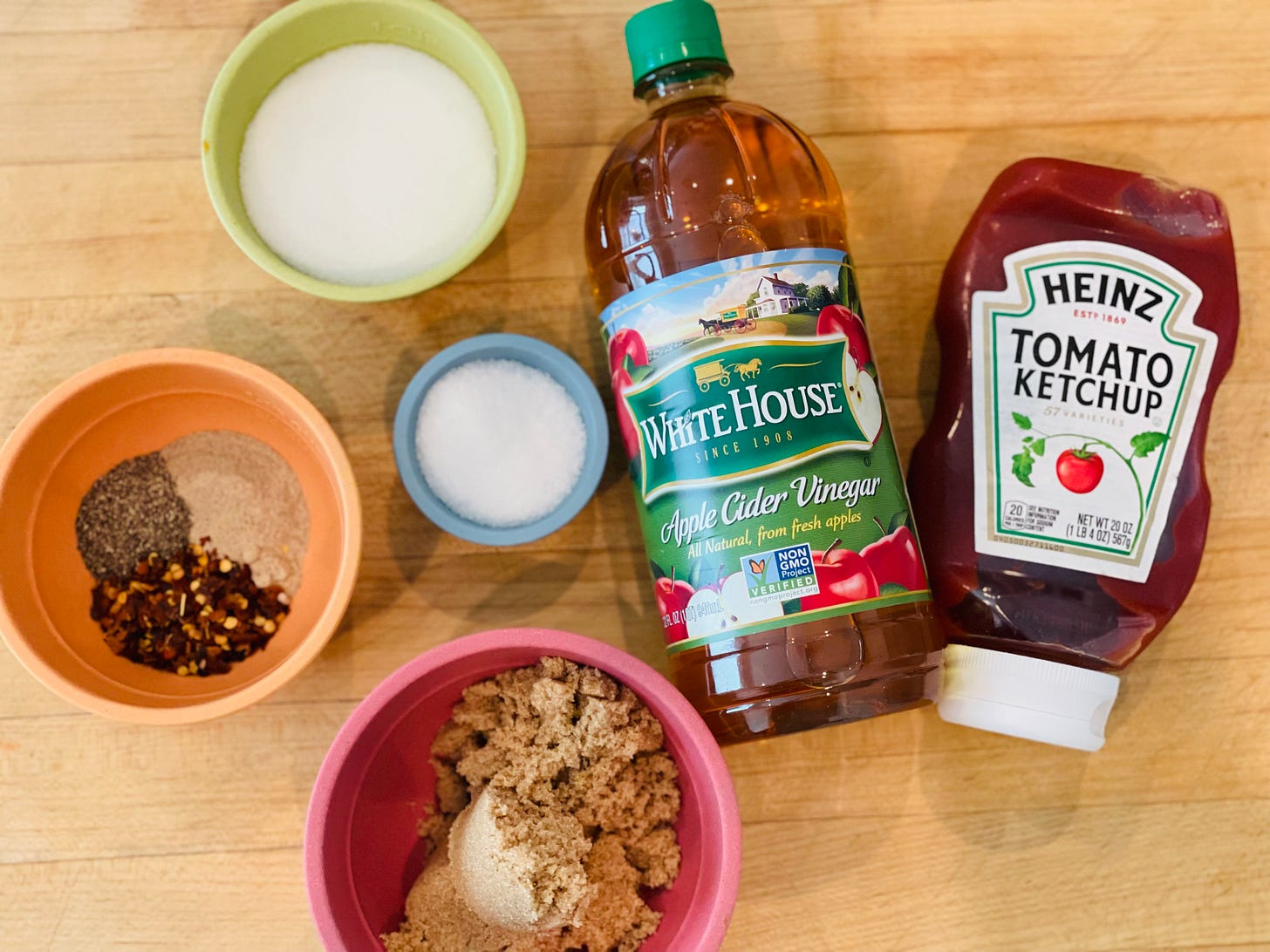
EK: Being from the Western “Lexington” region of the state, I created my own vinegar “dip” to sauce the pork as I pulled it. I had no idea what the proportions were and I literally made it by taste memory.
Apple-cider vinegar was the base, a touch of ketchup sweetened and colored the sauce that was hot with three kinds of pepper: black, white, and red pepper flakes.
The flakes are the tell tale sign of authentic North Carolina dressed pork, as they stick to the meat and “pepper” it with red color. White sugar and kosher salt balance the heat and tang of the vinegar. Dark brown sugar adds a depth of flavor.
AU: Having had your North Carolina Pulled Pork, along with many other legendary barbecue experts’, I can honestly say that yours is my favorite! It’s the perfect combo of tang, smoke, and spice.
EK: Thank you Anthony! As they say, the secret’s in the sauce! The sauce is simple to make, but the effect it has on the pork is anything but simple. It cuts through the richness of the smoked meat, and enhances it, rather than covering it up (like some of the heavier barbecue sauces).
When I take the time and passion to barbecue, I want to taste the meat, not have the sauce cover it up. This is the beauty of a North Carolina vinegar sauce. It celebrates the silky, smoky, caramelized pork that is the star of the sandwich. There is a saying among barbecue champions that if you ‘“cook it right, you don’t need (a lot of ) sauce,” and I have to say, I agree with them.
You can make the sauce and the slaw while the pork is cooking, or you can make them the day before.
EK: The key to great North Carolina-style barbecue is being patient. There isn’t a fancy rub, or a mop, or a lot of tending to do. Cook the pork over a consistent indirect heat until it reaches an internal temperature of about 200ºF. That is a higher temperature than most books will tell you, but that is the necessary temperature to make all of the connective tissues break down. At this point the meat becomes so tender that all you need to pull it is 2 forks.
I’m old fashioned and never use a cleaver. IMO, Pulled Pork, should be “pulled” pork, and it should be tender enough that you don’t need a sharp piece of metal to cut through it!
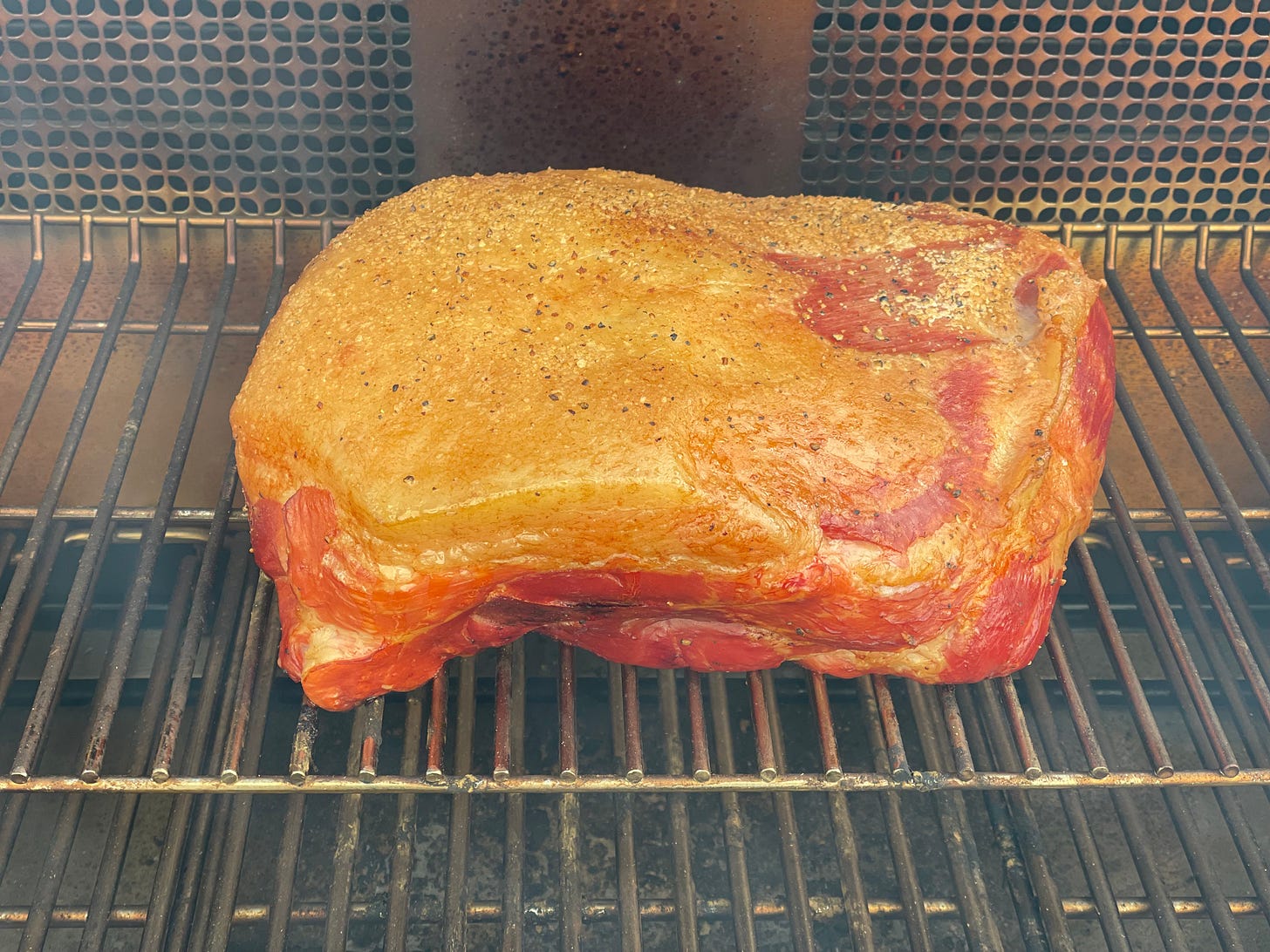
EK: Pulled pork is easier to make than it looks. Once you make it a couple of times, you won’t even need a recipe.
AU: Okay, I can wrap my head around making the sauce, etc. but what do I buy at the store? How do I know it’s ready to be “pulled?" What if I don’t have a smoker?? Walk us through it all…
PULLED PORK 101:
Cooking Method for a Grill or a Smoker
EK: Barbecued food is synonymous with low heat and slow cooking by indirect heat. I use a Traeger Pellet Grill and utilize the Super Smoke button for the first hour to get that gorgeous color in the photo above.
Barbecue also usually involves flavoring the food with wood smoke—I like to say, “a kiss of smoke.” Think of the wood smoke like a seasoning: all you need is a kiss or it will end up tasting acrid like an ashtray.
BTW, this smoking is considered hot smoking and does not preserve the food—it is solely a flavoring agent.
Choosing Your Meat:
EK: This is perhaps the single most important part of making great barbecue. Most people don’t believe me when I say this, but it’s true. Look for meat that is both marbled on the inside, and has a cap of fat on the outside.
Here’s why: During the long, slow cooking period the meat needs that natural fat to keep it basted as it cooks.
Don’t worry, your barbecue will not be greasy—if cooked properly, all the natural fat renders/drips away as it cooks. The dripping fat bastes the meat and leaves the flavor behind, creating melt-in-your-mouth barbecued meat.
AU: Okay, but I’ve seen like eight different things called “Pork Butt.” What are the differences??
EK: You are right. It can be a little confusing! When you go to the meat counter of your grocery store or butcher, you want to buy a cut from the shoulder or the whole pork shoulder. And, because things can never be that easy, you’ll probably see a number of pieces of pork labeled differently, but all coming from the pig’s shoulder which includes the Boston Butt. And, that’s right. The Butt comes from the shoulder, not the rear of the pig!

EK: The most common name for the cut will depend on where in the USA you live. Theoretically, you will be able to find the cuts “bone-in” or “boneless.” The bone is a very important indicator of doneness, so I always buy it bone-in. Bone-in will take a longer to cook, but it will also hold everything together and cook more evenly.
Bone-in Boston Butts and Whole Pork Shoulders are the competition barbecuer’s cut of choice with the Boston Butt being the sweet spot and virtually foolproof to cook.
Whole Pork Shoulder - The hog’s whole shoulder with the bone-in and the joint should weigh between 12-20 pounds, depending on the size of the pig. Generally, this is butchered into two separate cuts: The Pork Butt (Boston Butt) and the Picnic Ham.
Boston Butt - The Boston Butt is the substantial rectangular cut from the top of the shoulder and directly behind the head. It is full of dense marbled meat, and the meat is a bit finer and sweeter. This cut can be bone-in or boneless, and can be left whole or cut into smaller boneless “Butts” or “Roasts,” that range between 3 -7 pounds. (also known as Boston Roast, Boneless Pork Butt, Shoulder Butt, Pork Butt Roast, or Pork Shoulder Roast)
Picnic Ham - The Picnic Ham is cut from the lower half of the shoulder and is usually sold with the skin intact. I find that the meat is much coarser. It is an acceptable cut to smoke, if that is all that’s available, but because it is a muscle that is used more by the animal, it is tougher.
EK: My bone-in Boston Butt weighed just over 10 pounds and was a beauty. It hardly had any un-useable meat. Once I pulled the pork and removed the bone, I had about 36 good-sized servings for sandwiches, so the yield was almost the same as the raw weight of the Boston Butt.
Visual Clues for Testing for Doneness:
EK: Aside from using an instant-read thermometer to test the meat, and looking for a temperature between 190ºF and 200ºF, there are some visual cues that are telltale signs of properly cooked ‘cue…
Bone-In - the bone slips out cleanly, with no meat clinging to it
Boneless - the instant-read thermometer feels like it’s going through soft butter with no resistance.
If you don’t feel like the pork is tender enough, you can employ “The Texas Crutch.” This is a method they use on the competition barbecue circuit where one wraps the pork in foil at the end of the cooking time. The meat will steam and finish cooking at the same time, making it soft and tender, while melting all the connective tissues. This will ensure that the bone of the pork butt comes out clean.
THE W4D CHECKLIST: PORK BUTT 101
Preheat barbecue grill (covered)—charcoal, gas, or pellet smoker
Soak wood chips, if using, (for gas or charcoal grill)
Season with kosher salt and pepper or favorite barbecue rub
Reduce heat to low, indirect heat (ABOUT 220-225ºF)
Place meat on the center of the cooking grate
After 2-3 hours, increase the temperature to medium-low indirect heat to render the fat and melt the connective tissue (ABOUT 285-300ºF)
Cook to an internal temperature of 190ºF - 200ºF
Remove from grill
Let meat rest 15 minutes
Discard cartilage and fat pockets; Shred or pull pork while still hot
Dress with North Carolina Vinegar Sauce while pulling/shredding, and while meat is still warm
W4D GIVEAWAY: FOR TRUE BBQ LOVERS
EK: Fellow North Carolinian Ed Mitchell is my barbecue buddy and Anthony has produced him many times on Good Morning America during the good ol’ days of the Big Apple Barbecue Block Party!
AU: I adore this man and his family. Not only do they create some of the best whole hog barbecue I’ve ever had the privilege of eating, but he is the absolute kindest, most generous soul…
EK: Couldn’t agree with you more! Ed and his son, Ryan, have finally put all their stories and drool-worthy recipes in a book. Not only can you learn to make whole hog barbecue the Ed Mitchell way, but you can make all of his family’s Eastern North Carolina favorites—barbecue, sides, and desserts—like Smoked Collard Green Dip, Hellwig Bacon-Tomato Jam and biscuits or Candied Sweet Potato Soufflé, and Oddball Carrot Cake!
EK: And, you can’t grill or barbecue or even make a cake with out a good hot dish mitt—or gloves! So we have paired his book with a pair of these top-rated Heat Resistant Gloves!
When I first heard about these gloves, I figured they’d be like every other fabric gloves that I had tried. But I was wrong; they are better! Don’t just take my word for it! Meathead’s AmazingRibs.com prides itself on testing, comparing, and reviewing any grill-related product they can get their hands on.
Grilling expert, Rick Browne, Ph.B. conducted a test of fabric grill gloves, and the Grill Armor Gloves got the gold. One of the things that I like most about them is that they are available in two sizes: a pair of red gloves for smaller hands, and black gloves for larger hands. The other great thing about these gloves is that they’re machine washable!
I use them indoors and outdoors. The other day, I preheated my six-burner gas grill on high until it was well over 800°F, and I realized that I needed to take the warming rack off to fit what I was cooking. Ordinarily, I would use tongs to do this, but I had my Grill Armor Gloves on and I decided to test them. I used my gloved hands to take off the warming tray and I didn’t feel a thing! That makes them the best fabric grill gloves that I’ve ever tried!
*Paid subscribers are automatically entered to all giveaways. If you’d like to be eligible, upgrade to a paid subscription by Tuesday September 5, 2023 at 11:59pm PST. Continental U.S. only.





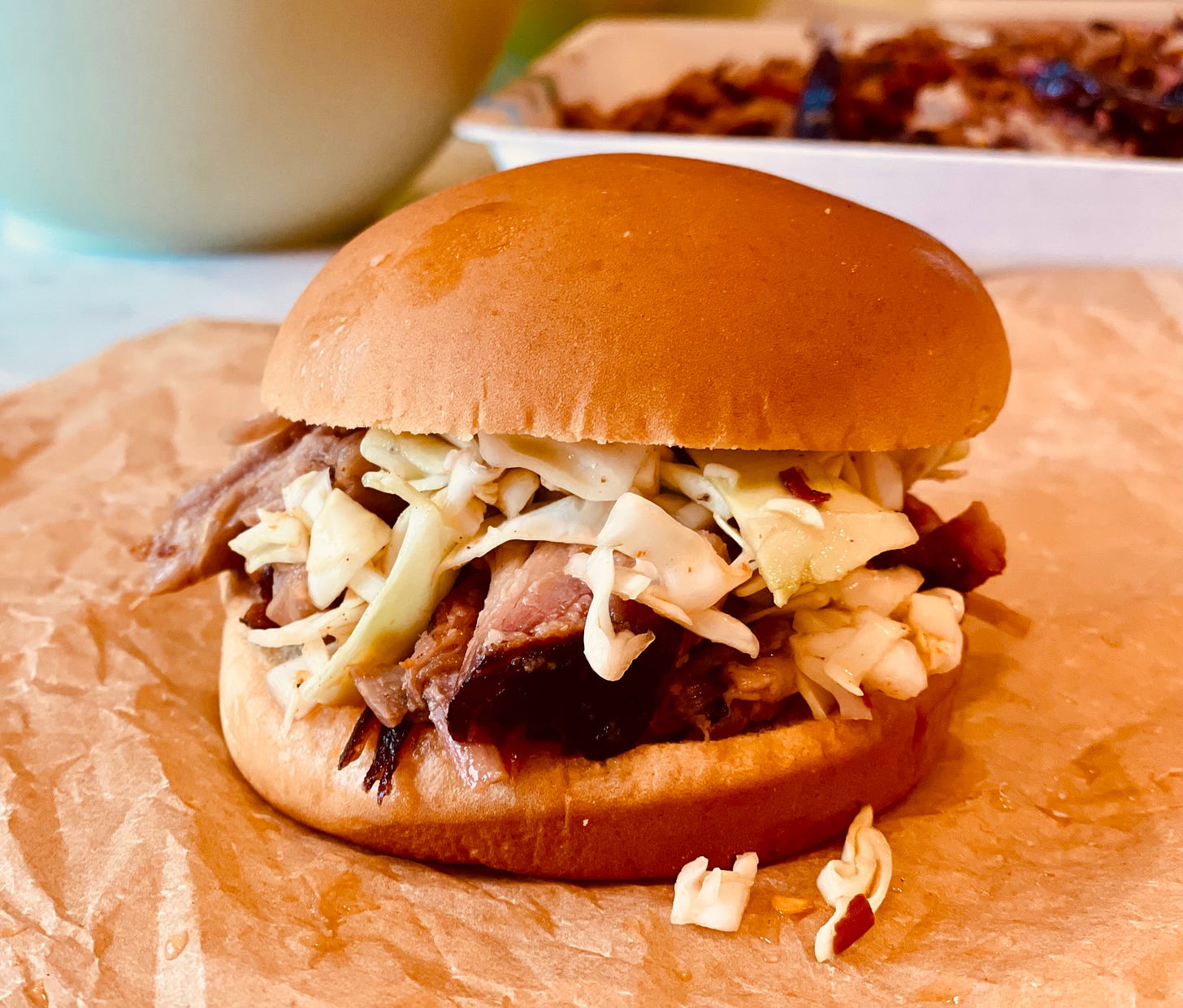
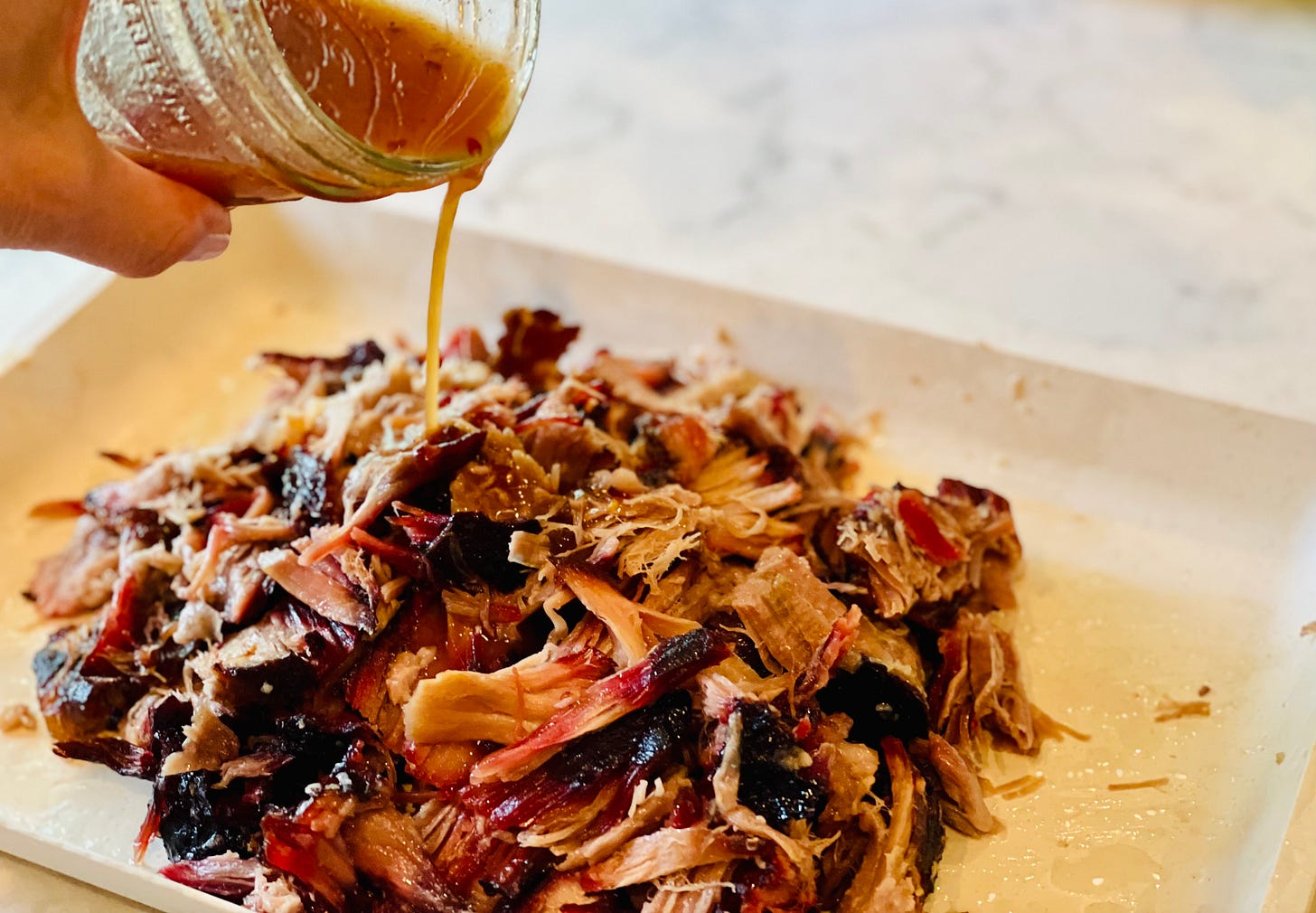
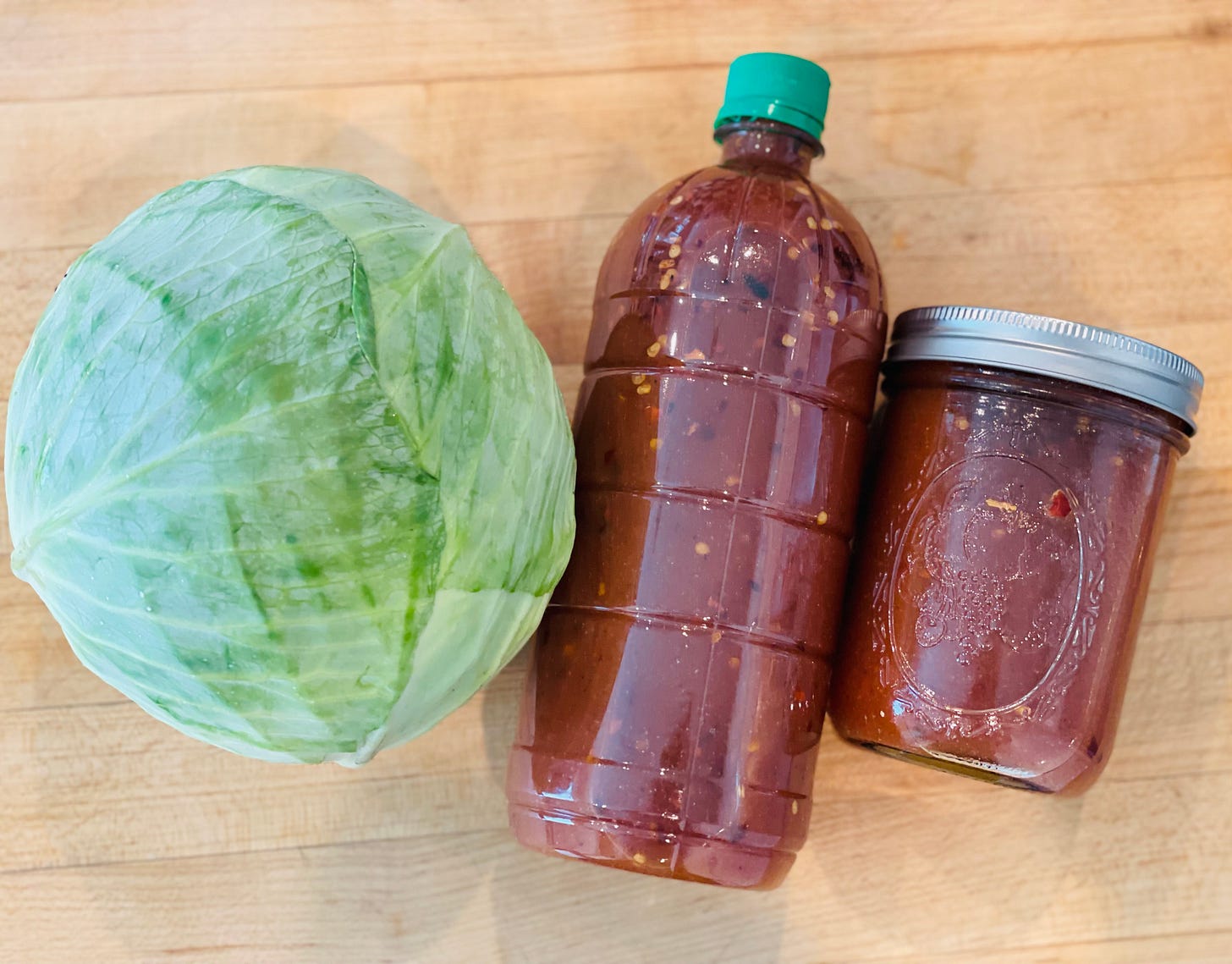
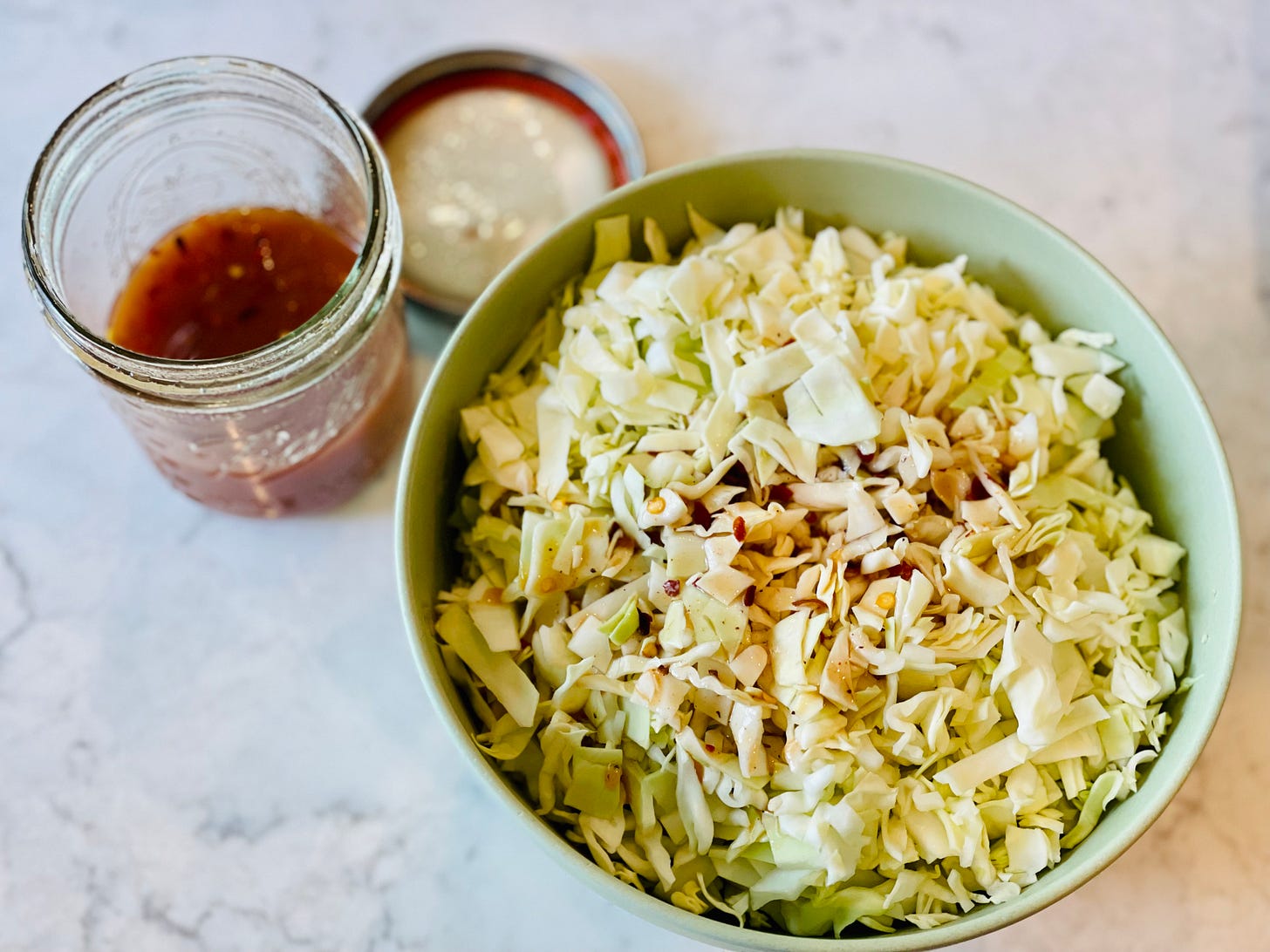
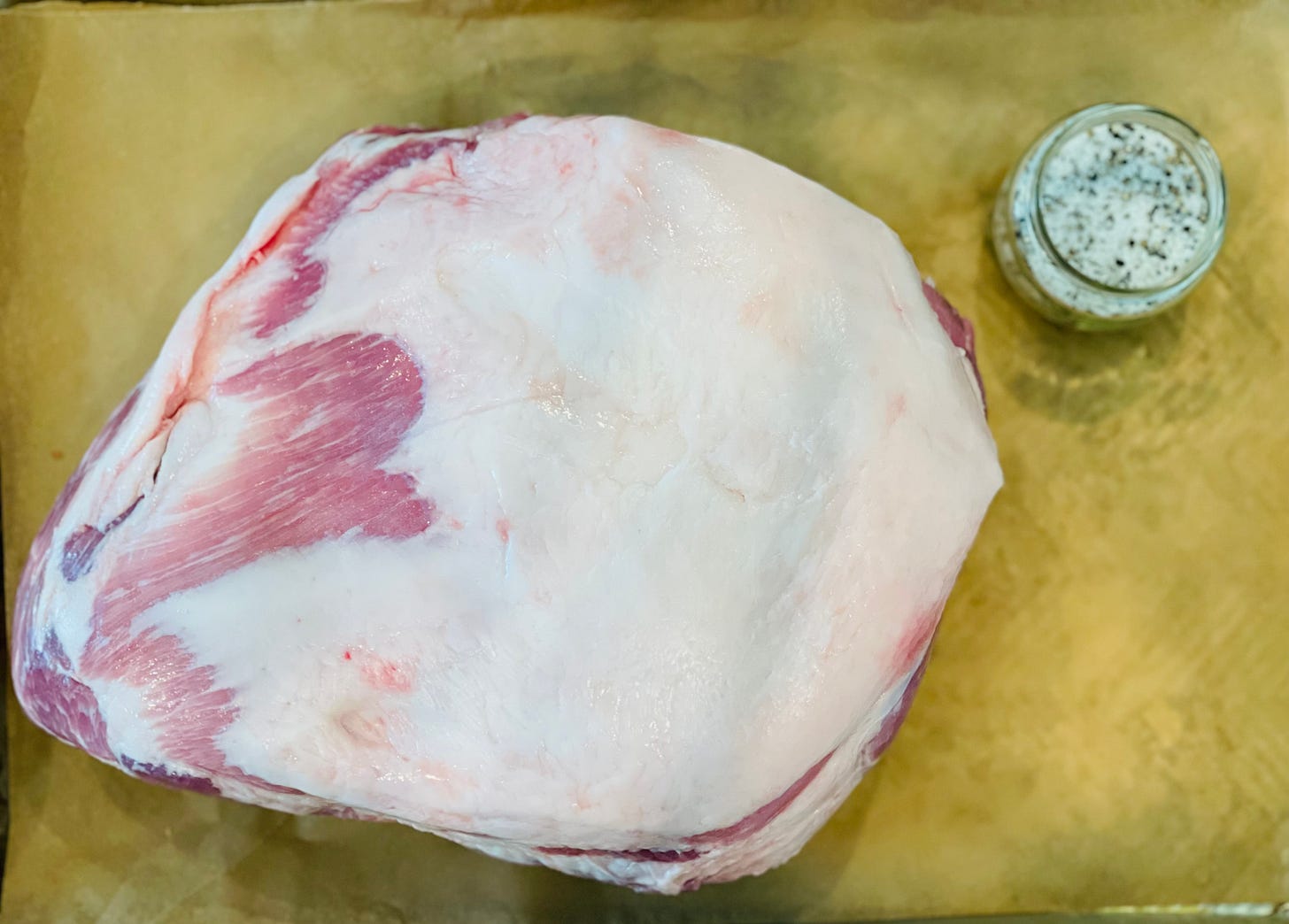
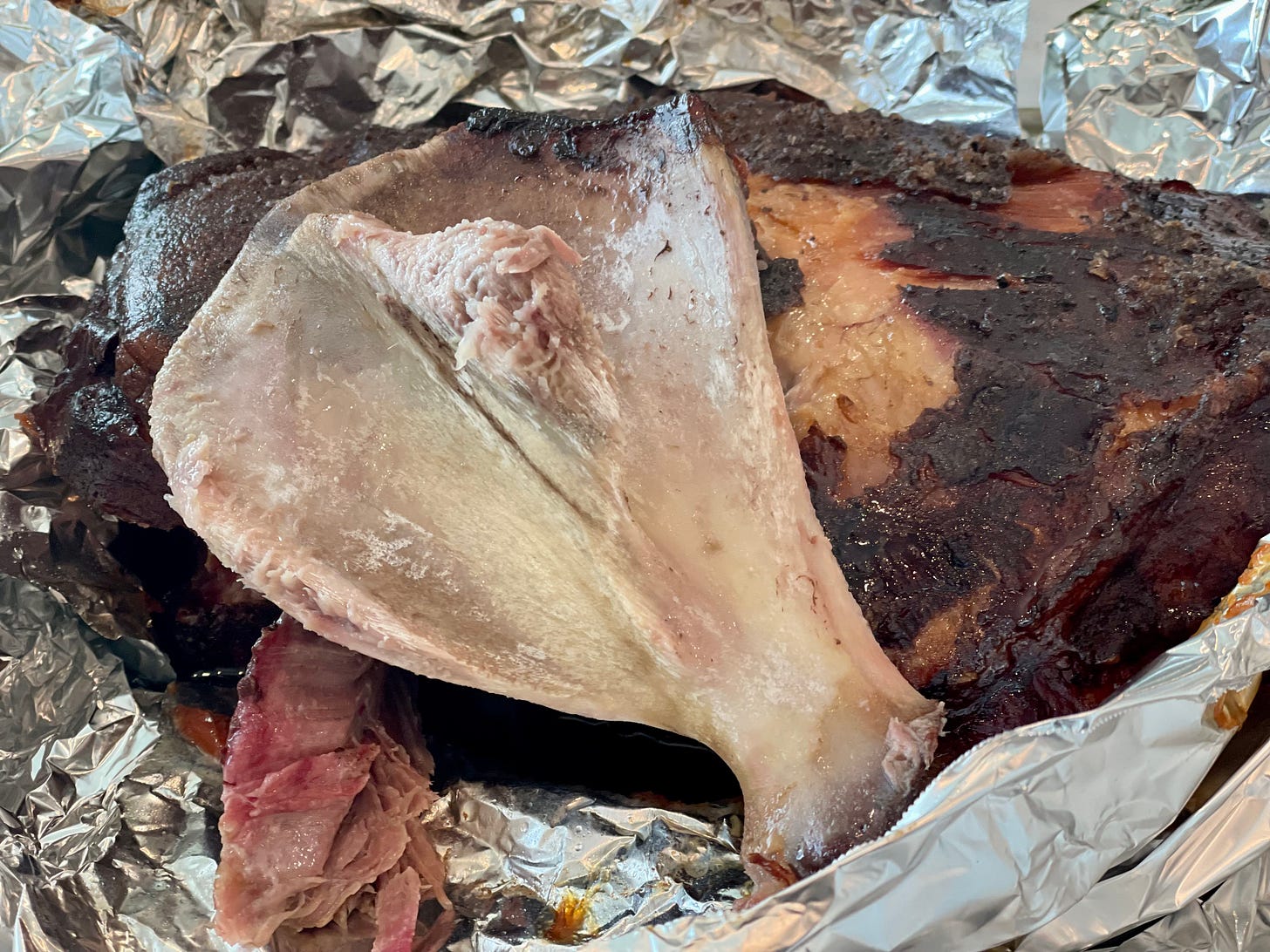
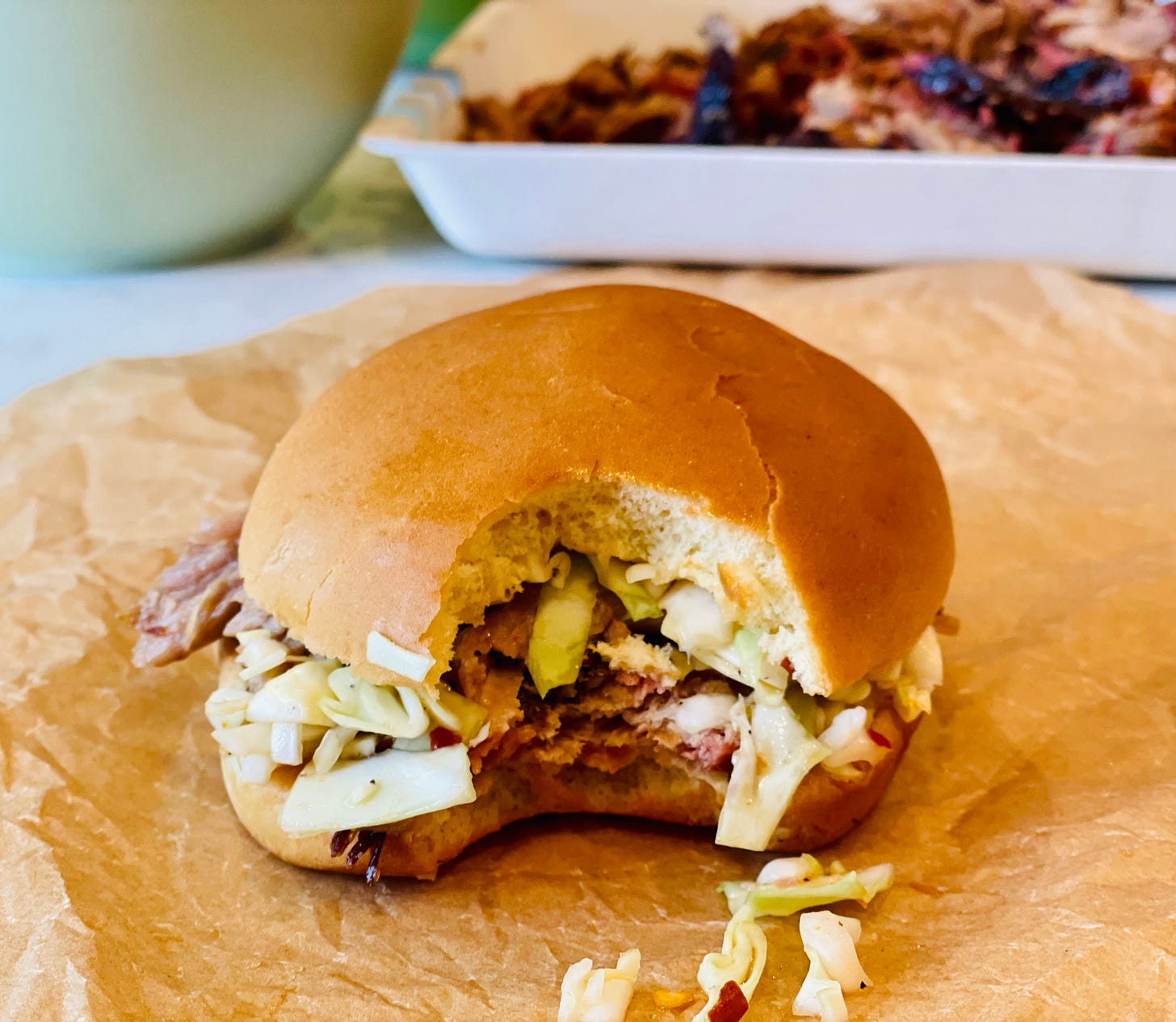
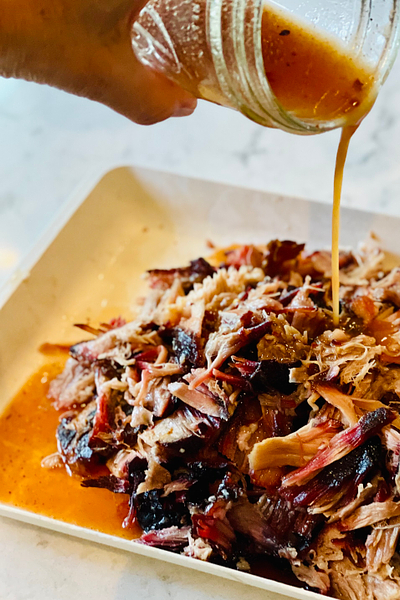
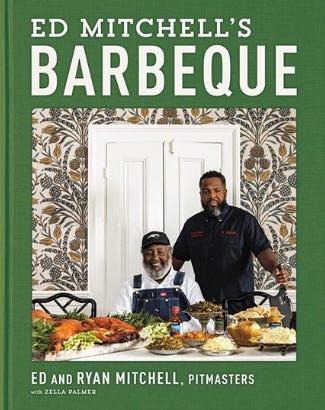
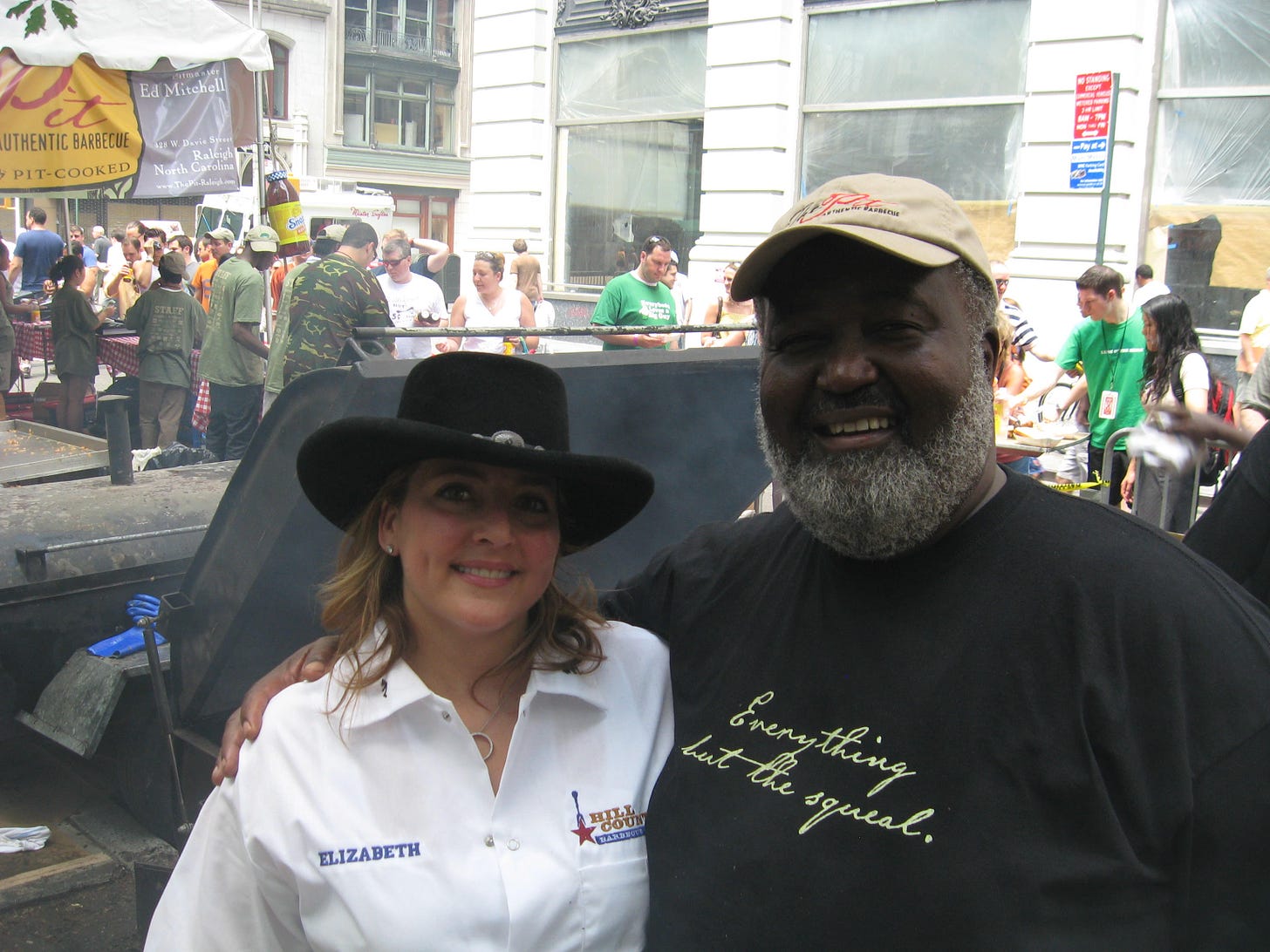
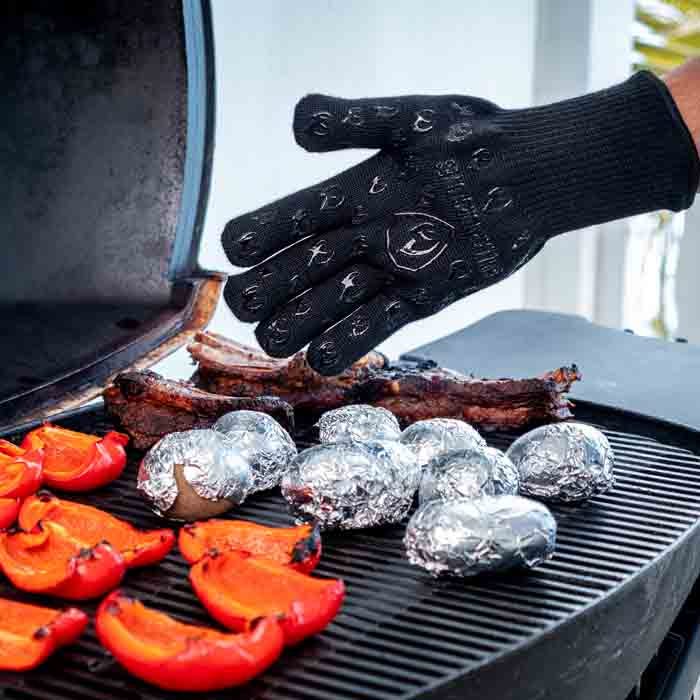
Elizabeth, your pulled pork really is THE BEST. Thank you for showing us how it’s done!